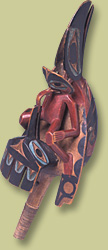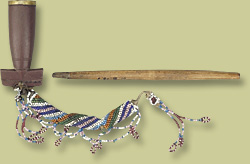|
|
Arrival of Strangers - The Last 500 YearsBeliefsIn 1534, Jacques Cartier planted a cross on the shores of the St. Lawrence River, claiming the New World for the King of France. This act foreshadowed the coming of Christianity. In 1610, a European priest baptized Henri Membertou, a Mi'kmaq Grand Chief. This baptism began a program of conversion that eventually involved Roman Catholic and Protestant missionaries, and affected the whole Aboriginal population of Canada. Christian missionaries began their work in the 1600s. By the 1800s, colonial governments, followed by the federal government, were working with the churches to establish residential schools and Indian day schools. The Indian Act forbade some Aboriginal religious practices. Conversion touched every aspect of life. Missionaries encouraged hunters and fishermen to adopt agriculture, and make their lives conform to European ways.
| |


